Electric School Buses: Catalysts for Peak Shaving and Load Leveling in V2G Systems
© 2023 Aditya Kumar Sharma, et al. This is an open-access article distributed under the terms of the Creative Commons Attribution License, which permits unrestricted use, distribution, and reproduction in any medium, provided the original author and source are credited.
Abstract
This comprehensive research paper navigates the complexities arising from the peak demand for electric vehicle (EV) charging during traditional peak hours within the Vehicle-to-Grid (V2G) systems framework. The crux of the matter lies in the emergence of grid congestion—a critical issue leading to inefficiencies, voltage fluctuations, and potential disruptions in power supply. The paper highlights the challenges associated with grid congestion, mentioning its implications on the reliability of V2G services. Overburdened charging infrastructure not only results in delays and increased maintenance requirements but also elevates the likelihood of technical failures, further jeopardizing the stability of the entire energy distribution system. To address these challenges, the paper explores the concepts of peak shaving and load leveling as strategic interventions in energy management. Peak shaving, an approach aimed at mitigating the highest peaks in electrical load profiles, seeks to minimize electricity costs by avoiding or mitigating peak demand charges—a significant component of commercial or industrial electricity bills. On the other hand, load leveling endeavors to balance electrical loads over specific periods, ensuring a consistent and stable load profile. These strategies involve utilizing energy storage systems, demand response programs, and innovative grid technologies to optimize electrical power consumption
Introduction
The rapid adoption of electric vehicles (EVs) and the development of Vehicle-to-Grid (V2G) systems mark an important step in the energy landscape. However, amid the promise of sustainable energy integration, a substantial challenge is the peak demand for EV charging during traditional peak hours. This challenge results in a phenomenon known as grid congestion within V2G systems, introducing a host of issues, including inefficiencies, voltage fluctuations, and potential disruptions in power supply. As more EVs simultaneously connect to the grid during periods of high energy demand, the existing infrastructure faces bottlenecks, hindering the smooth flow of Electricity. This paper aims to delve into the intricate problems associated with grid congestion in V2G systems, explore viable solutions to address these challenges and see how school buses during their Mid-day and after-PM run (afternoon – school to home trips) can help in a big way in alleviating this problem.
Grid Congestion and Inefficiency in V2G
One of the significant challenges in Vehicle-to-Grid (V2G) systems is peak demand for electric vehicle (EV) charging during traditional peak hours. This situation arises when many EVs simultaneously connect to the grid for charging, typically during periods of high energy demand. The challenges associated with peak demand during peak hours in V2G systems lead to several problems, including Grid Congestion. The influx of electric vehicles seeking charging during peak hours can result in grid congestion, causing bottlenecks in the energy distribution infrastructure. Grid congestion hampers the smooth flow of Electricity, leading to inefficiencies, voltage fluctuations, and potential disruptions in power supply. High demand for charging stations during peak hours stresses the existing EV charging infrastructure. Overburdened charging infrastructure leads to delays, increased maintenance requirements, and a higher likelihood of technical failures, affecting the reliability of V2G services. Grid instability further poses risks of voltage fluctuations, frequency deviations, and potential grid failures, jeopardizing the reliability of the entire energy distribution system. Further, peak demand during peak hours leads to spikes in energy prices as utilities may implement peak-demand pricing models as they know the usage during that period is high. Higher energy prices during peak periods can increase costs for EV owners and the grid operator, creating financial challenges and potential disincentives for V2G participation.
Solutions of Peak Shaving and Load Leveling
Peak shaving and load leveling are two strategies used in energy management to optimize the consumption of electrical power and ensure a stable and efficient electrical grid operation. Here's a detailed explanation of both concepts:
Peak Shaving
Peak shaving is a strategy employed to reduce or "shave off" the highest points or peaks in the electrical load profile of a facility or the entire electrical grid. The primary goal of peak shaving is to minimize electricity costs by avoiding or mitigating peak demand charges, often the most expensive component of a commercial or industrial electricity bill. During periods of high electricity demand, certain facilities or systems may consume a significant amount of power, leading to peak demand. Peak shaving involves implementing measures to reduce this peak demand. This is achieved by using additional energy storage systems, implementing demand response programs, or optimizing the operation of electrical equipment to smooth out the peaks in energy consumption. To peak shaving many times, small-capacity power plants like gas power plants and diesel generators are commonly used, but they come with expensive operation and maintenance costs and are not viable options in the long run.
Peak load represents a critical factor for power grids, occurring intermittently and accounting for a small percentage of daily operation. The conventional approach of capacity addition to meet peak load is economically impractical and inefficient, requiring the maintenance of generation capacity utilized only for a few hours each day. This method results in drawbacks like high fuel consumption, increased carbon dioxide (CO2) emissions, elevated transportation and maintenance costs, and accelerated equipment deterioration. In light of these disadvantages associated with capacity addition, peak load shaving emerges as a more favorable approach.
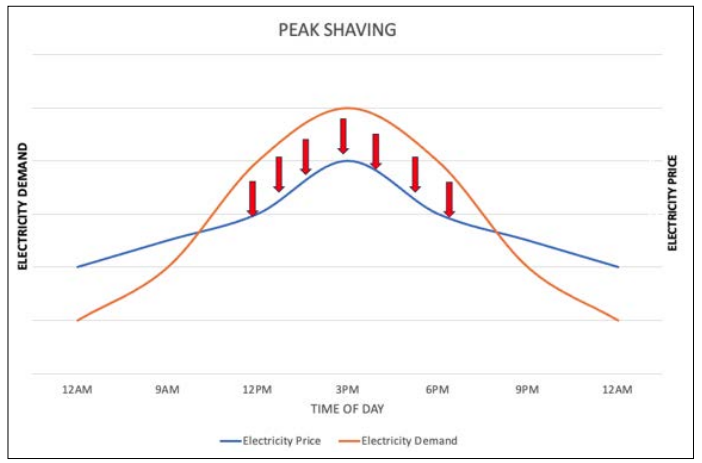
Figure 1: Phenonmenon of Peak Shaving: Electricity Price vs Demand
Load Leveling
Load leveling, or demand smoothing, is a strategy to balance the electrical load over a specific period, usually a day or week. The main aim of load leveling is to maintain a consistent and stable load profile, avoiding sudden spikes or drops in electricity consumption. Load leveling involves storing excess energy during periods of low demand and then releasing it during periods of high demand. This can be achieved using energy storage systems such as batteries. Advanced control systems and innovative grid technologies are crucial in monitoring and managing load levels, ensuring a steady and reliable power supply.
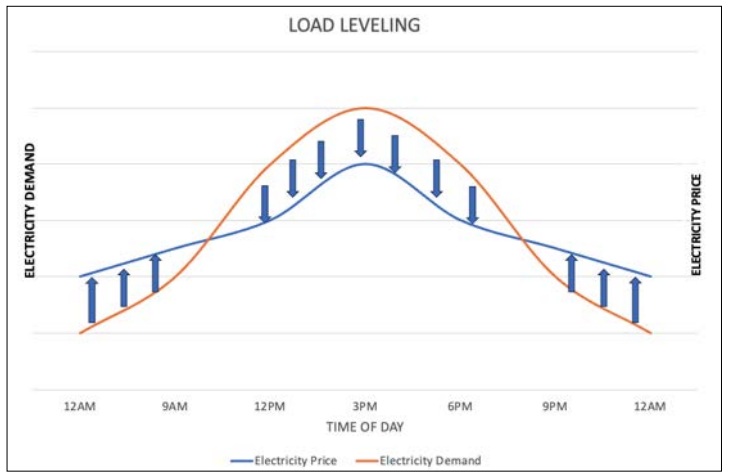
Figure 2: Phenonmenon of Load Leveling: Electricity Price vs Demand
Difference between the Peak shaving and Load leveling Load leveling and peak shaving are both strategies to manage electrical power consumption to ensure a stable and efficient power grid operation. They do have subtle differences in the objectives they serve, their usage method, and their applicability. The primary goal of load leveling is to maintain a consistent and steady electrical power consumption over time. It aims to distribute the load evenly throughout the day, reducing fluctuations and ensuring a more stable demand profile. Meanwhile, the main objective of peak shaving is to reduce or "shave off" the highest peaks of electricity demand during specific periods, typically during peak hours. This helps manage peak loads more efficiently and avoids strain on the power grid. Load Leveling focuses on evenly spreading the electricity consumption throughout the day, including peak and off-peak hours. Peak shaving primarily addresses reducing electricity consumption during peak demand periods, which usually have shorter durations during the day. Load Leveling involves energy storage, demand response, and load-shifting strategies to balance the overall load profile. Peak Shaving can often be achieved through energy storage systems, demand response programs, and the implementation of energy- efficient technologies during peak demand periods. Load Leveling helps optimize the use of resources, reduces the need for additional power generation capacity, and promotes grid stability. Peak Shaving saves costs by avoiding high electricity prices during peak hours, reducing the risk of grid congestion, and contributing to overall grid reliability. While Load Leveling is more relevant for industries and businesses aiming to maintain a consistent and predictable energy demand profile, Peak Shaving is particularly beneficial for utilities, businesses, and organizations looking to manage and reduce demand charges associated with peak electricity consumption.
How the School Buses can Help a Long Way in Peak Shaving and Load Leveling
A large fleet of electric school buses (EVs) can play a crucial role in peak shaving and load leveling within the energy grid. Electric school buses can be equipped with bi-directional charging technology, allowing them to charge their batteries and discharge energy back into the grid when needed. This bidirectional flow of Electricity enables the buses to act as mobile energy storage units. The charging schedules of the electric buses can be strategically managed to align with periods of low electricity demand. Charging during off-peak hours ensures the buses are ready for operation during peak demand periods, contributing to load leveling. Electric school buses can discharge stored energy back into the grid when the demand for Electricity is high. This process, known as peak shaving, helps reduce the grid's overall demand during peak hours, mitigating the need for additional power generation resources. Electric buses can provide immediate support in emergencies or during unexpected peak demand by supplying stored energy to the grid. This enhances the grid's reliability and resilience during critical periods. Electric school buses can be strategically deployed to areas experiencing high electricity demand. Positioning buses in locations with increased energy needs can effectively contribute to load leveling and provide targeted support during peak times. Aggregating the services of a large fleet allows for a more substantial impact on peak shaving and load leveling. Multiple buses' collective energy storage capacity can be harnessed to address larger-scale grid challenges. Implementing advanced grid- integrated management systems allows for real-time monitoring and control of the electric bus fleet. These systems can optimize the timing of charging and discharging activities based on grid conditions and demand forecasts.
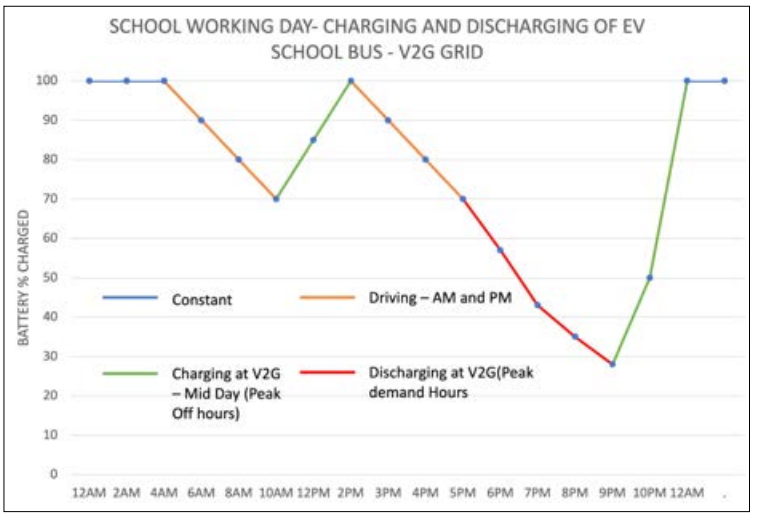
Figure 3: School Working Day- Charging And Discharging Of EV School Bus - V2G Grid
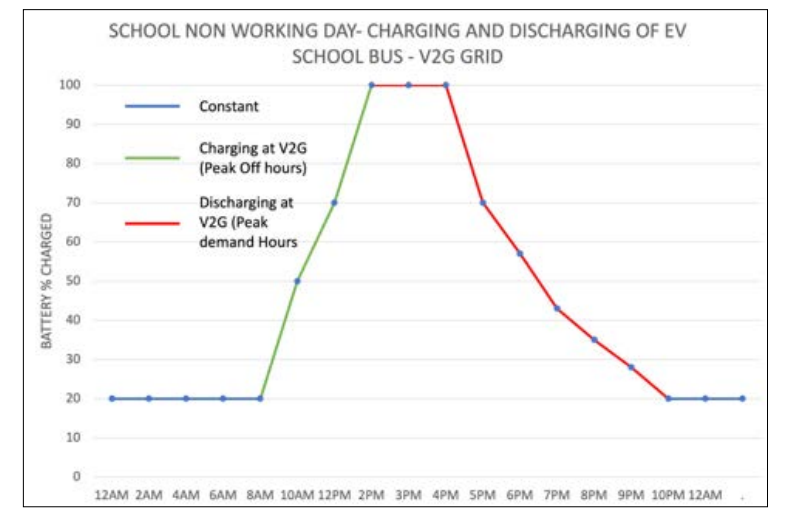
Figure 4: School Non Working Day- Charging And Discharging of Ev School Bus - V2G Grid
How Bell Time Changes in the School Industry can Help Bell time changes in the school industry can have a profound impact on the efficiency and sustainability of electric school bus fleets, particularly in their contribution to Vehicle-to-Grid (V2G) applications. This shift in scheduling not only optimizes bus routes but also presents a unique opportunity for the coordinated deployment of electric school buses to support peak shaving and load leveling on the V2G grid.
When bell times are adjusted to optimize routes, electric school buses can return to their designated hub between 09:00 am and 10:00 am after completing their morning runs (from home to school). This strategic scheduling ensures that a significant number of electric buses are available and ready to participate in V2G activities during the mid-day period from around 09:00 am to afternoon pickup time from school to home – around 01:30 pm. By bringing all the electric buses back to the hub in a coordinated manner, they can collectively contribute to peak shaving and load leveling on the V2G grid. Efficient routing in the school industry brings about various benefits. Additionally, bell time changes contribute to fuel savings by optimizing bus routes, reducing unnecessary travel distances, and minimizing EV battery consumption. If less battery has been spent on routes in the AM run, that means the same battery can now be utilized to give back (if needed) to the V2G grid. In terms of Vehicle-to-Grid (V2G) support, these changes enable a coordinated discharge during peak demand hours. Further, the morning bell time changes also affect the evening bell times, and if the buses bring back all students early in time, they can collectively join the grid to help with the peak demand hours. The synchronized availability of electric buses after the PM runs – 04:30 pm aligns perfectly with peak demand hours, allowing the entire fleet to discharge energy to the V2G grid. This active participation in V2G operations during mid-days by a large number of electric school buses becomes a valuable resource for both peak shaving and load leveling, contributing significantly to a more stable and resilient grid.
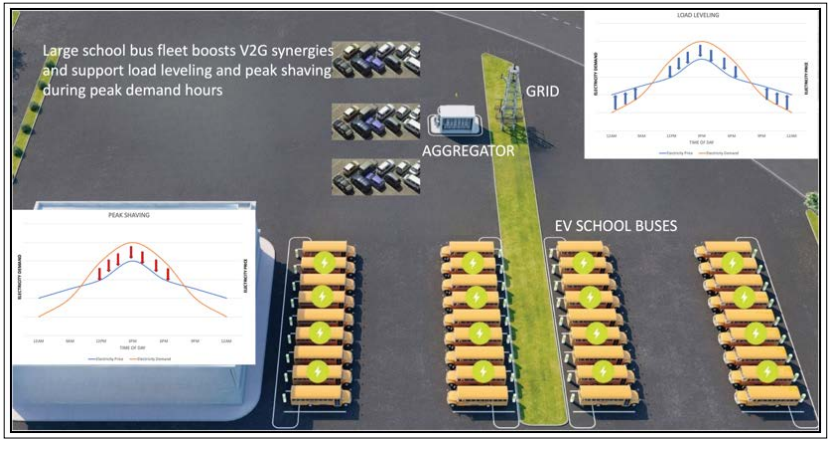
Figure 5: Big EV School Bus Fleet to support the V2G Grid during Peak Demand Hours
Here are some key formulas and considerations related to peak shaving and load leveling in the context of a large electric vehicle (EV) school bus fleet of, let's say, 200 EV school buses that are available after their PM runs- (5 pm – 9 pm), since these are peak demand hours for the V2G grid:
Peak Shaving Formula
- Peak shaving aims to reduce the maximum demand during peak hours. The formula for peak shaving is:
- PeakShaving=MaximumPeakDemand−ShavedPeakDemand
Load Leveling Formula
- Load leveling involves distributing the electrical load more evenly over time. The formula for load leveling can be expressed as:
- LoadLeveling=TotalElectricityConsumed / NumberofTimePeriods
V2G Efficiency Calculation
- V2G systems involve bidirectional power flow between the EVs and the grid. The efficiency ( η) of V2G can be calculated as:
- η=EnergyDischargedfromEVtoGrid / (EnergyInitiallyStoredinEV)×100%
Battery State of Charge (SoC)
- To optimize peak shaving and load leveling, monitor the State of Charge of the EV batteries. The SoC (%) can be calculated as:
- SoC=CurrentBatteryCapacity / (TotalBatteryCapacity)×100%
- Maximum Peak Demand (X): Assume X kW (a pattern and data analyzed value of maximum electricity demand during peak hours – (5 pm – 9 pm).
- Shaved Peak Demand per EV (Y): Assume Y kW/EV (each EV contributes to reducing peak demand).
- Total Electricity Consumed by the Fleet (Z): Assume Z kWh (total electricity consumption).
- A number of Time Periods (Duration) (T): Assume T hours (evening peak demand window).
- V2G Efficiency (η): Assume an average V2G efficiency (η) for the fleet.
- Initial Battery State of Charge (SoC): Assume an averageminitial SoC for all the EVs in the fleet.
Now, let's run the calculations and look at the benefits.
• Peak Shaving Formula
Peak Shaving=X−(200×Y), 200 is the assumption of the number of EV school buses that are available.
The negative value here will indicate that the fleet contributes to reducing the peak demand, which Is received when a fleet of 200 EV school buses come together to discharge load to the V2G grid.
• Load Leveling Formula
Load Leveling = Z/ T
The fleet will achieve load leveling by distributing electricity consumption more evenly.
- V2G Efficiency Calculation and Battery State of Charge (SoC) can be accordingly calculated by plugging in the required formulas, and we can see, based on configurations of the grid, the demand of the grid and how much load 200 EV buses are able to provide, how much efficient the process is and what is the battery state of charge.
- In a 200-school-bus system charging at about 30kWh, there's a simultaneous 6MWh (or 200 X 30 = 6000kWh) load requirement and discharge to the grid. This marks a groundbreaking deployment in student transportation.
- This can ensure reliable availability during grid stress (5–91 pm) due to predictable, low utilization.
- It will further ensure availability for mid-day charging (between morning and afternoon school runs), late-evening, low-peak hours, and mainly the availability to support the V2G high-peak hours.
- Further, this ensures very low (to no) utilization during summer months, winter, and spring breaks, given school vacations, making these vehicles the most reliable service asset to grids during this period of highest energy
- This reflects a greater impact at scale - in the U.S., as the school buses outnumber other transit buses by more than five to
- Practical Conclusions include that the fleet, through V2G activities, actively contributes to reducing the peak demand on the grid. Load leveling achieved by the fleet helps in smoothing out electricity consumption, promoting a more stable and efficient grid The positive impact on the grid is a result of effective V2G management, showcasing the potential benefits of large-scale EV fleets in peak shaving and load leveling. Further optimization, real-time monitoring, and grid integration strategies can enhance the overall effectiveness of such V2G deployments.
- Moreover, this can not only be for one V2G grid; we can combine multiple yard locations of buses into a central location if deemed fit and have more school buses contribute to the demand needs.
- A thorough analysis of EV charging traffic, road conditions, busy office times, and trends in energy demand can give a very good prediction of how many school buses may be needed for serving this purpose and, accordingly, how many yards can be combined by the transportation provider to support the need.
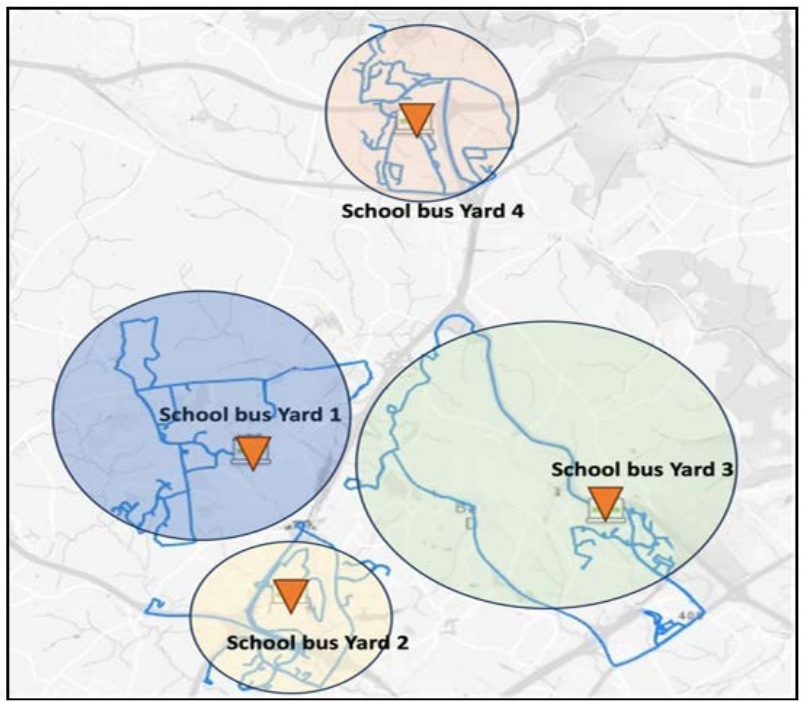
Figure 6: Decentralised multiple yards close
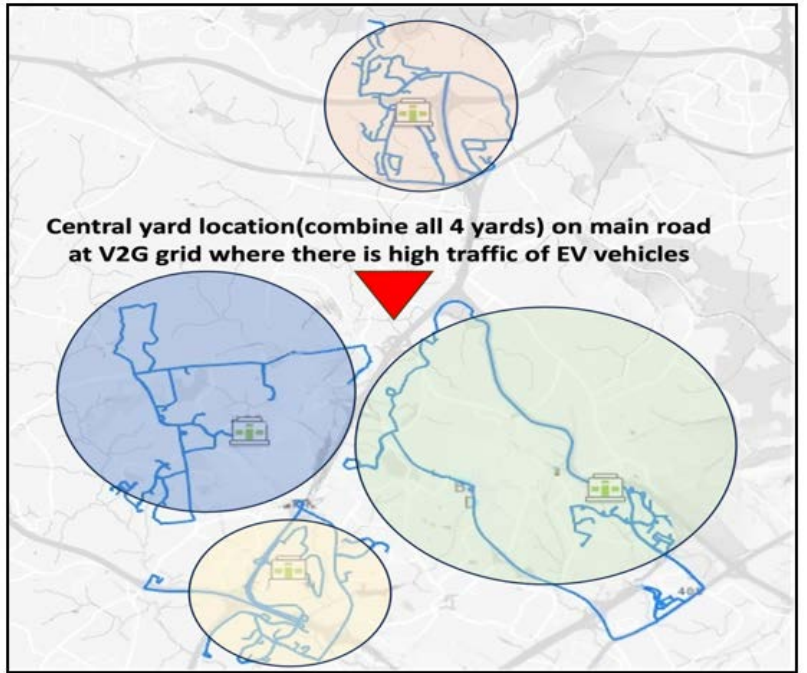
Figure 7: Centralised Yard with all 4 yards at the main highway to charge the V2G grid
Future Scope of Work
Building on the comprehensive analysis of grid congestion challenges in Vehicle-to-Grid (V2G) systems presented in your research paper, several areas emerge for future exploration. One crucial avenue is the advancement of grid management technologies, focusing on the integration of artificial intelligence and machine learning for more accurate prediction and management of peak loads. Additionally, there is a substantial opportunity for economic and policy analysis to understand the cost-benefit aspects of V2G systems, the impact on electricity pricing, and the necessary economic incentives to encourage V2G participation, particularly among electric school bus fleets.
Environmental impact studies are also vital, assessing how widespread V2G adoption affects carbon emissions, air quality, and overall sustainability goals. Technological advancements in EV batteries, bi-directional charging, and the development of smart charging infrastructure that aligns with renewable energy sources present another significant research direction. Implementing and analyzing case studies or pilot programs in diverse regions could provide practical insights and data for refining these V2G solutions.
Furthermore, the development of interoperability standards and protocols is essential to ensure seamless integration of various EVs, charging systems, and electric grids. The role of V2G systems in enhancing grid resilience, particularly in the context of increasing renewable energy integration and cybersecurity concerns, warrants in-depth investigation. Understanding the socio-economic impacts and consumer behavior related to V2G systems, including the willingness of schools to participate and the ramifications for utility companies, is another critical area. This research could extend to exploring the integration of V2G systems within broader smart city initiatives, which encompass intelligent transportation systems and sustainable urban development.
Finally, assessing the long-term sustainability and scalability of the proposed solutions, especially considering the dynamic nature of energy demand, evolving EV technology, and the growing penetration of renewable energy sources, is imperative. Each of these research areas promises to enrich our understanding and capabilities in managing grid congestion and optimizing energy use in V2G systems, paving the way for more efficient and sustainable energy solutions.
Conclusion
In conclusion, the rapid evolution of electric vehicles (EVs) and the emergence of Vehicle-to-Grid (V2G) systems signify a significant advancement in the energy landscape. However, the challenge of peak demand during traditional peak hours poses a hurdle, leading to grid congestion within V2G systems and subsequent inefficiencies. This paper has thoroughly explored the complexities of grid congestion, highlighting its implications on electricity distribution and the potential risks it poses.
A detailed examination of peak shaving and load leveling strategies is crucial in energy management and aims to optimize power consumption and ensure a stable electrical grid operation. The discussion delved into the nuances of each strategy, emphasizing their distinct objectives and applications. The paper further proposes a pioneering solution involving a large fleet of electric school buses actively participating in V2G activities. These buses, equipped with bi-directional charging technology, can serve as mobile energy storage units, contributing to both peak shaving and load leveling. Strategic scheduling, especially with optimized bell times in the school industry, enhances the effectiveness of these buses in supporting the V2G grid during peak demand hours. Assumptions on calculations and considerations were provided to illustrate the potential impact of a fleet of 200 electric school buses on peak shaving and load leveling. The results demonstrate the fleet's capability to significantly reduce peak demand, distribute electricity consumption evenly, and enhance V2G efficiency.
Practical conclusions emphasize the positive impact of large-scale EV fleets on grid stability through effective V2G management. The potential for combining multiple yard locations to centralize operations and optimize resources has the capability for further energy optimization. The analysis underscores the importance of thorough assessments, considering factors such as EV charging traffic, road conditions, and energy demand trends for accurate predictions and optimal fleet deployment. In essence, this research contributes valuable insights into addressing grid congestion challenges in V2G systems and presents an innovative solution leveraging electric school buses for peak shaving and load leveling [1-11].
References
- Rasolomampionona DD, Mariusz Klos (2023) Energy Storage Systems and Their Role in Smart IntechOpen Ebooks https://www.intechopen.com/chapters/81462.
- Uddin M, Mohd Fakhizan Romlie, Mohd Faris Abdullah, Syahirah Abd Halim, Ab Halim Abu Bakar, et al. (2018) A review on peak load shaving strategies. Renewable and Sustainable Energy Reviews 82: 3323-3332.
- Barisal AK, Soudamini Behera, Sasmita Behera (2023) Dynamic economic emission dispatch including electric vehicles’ demand management and vehicle to grid support considering physical constraints. Journal of Ambient Intelligence and Humanized Computing 14: 2739-2757.
- Necmi Altin, Melih Sarp (2020) Review on Vehicle-to-Grid Systems: The Most Recent Trends and Smart Grid Interaction Gazi University Journal of Science 33: 394- 411.
- Demirci A, Said Mirza Tercan, Umit Cali, Ismail Nakir (2023) A Comprehensive Data Analysis of Electric Vehicle User Behaviors Toward Unlocking Vehicle-to-Grid IEEE Access 11: 9149-9165.
- Ajanovic A, Albert Hiesl, Reinhard Haas (2020) On the role of storage for electricity in smart energy systems. Energy 200: 117473.
- Ghazal T, Shahnewaz Islam, Dalbir Singh, Ghassan F Issa, Mohammad Kamrul Hasan, et (2023) Lithium-Ion Battery Management System for Electric Vehicles: Constraints, Challenges, and Recommendations. Batteries 9: 152.
- Genikomsakis KN, Bocquier B, Lopez S, Ioakimidis CS (2016) Utilizing Plug-in Electric Vehicles for Peak Shaving and Valley Filling in Non-residential Buildings with Solar Photovoltaic Systems. Proceedings of the 5th International Conference on Smart Cities and Green ICT Systems 1: 179-
- Khan M, Bhagya Nathali Silva, Kijun Han (2020) Futuristic Sustainable Energy Management in Smart Environments: A Review of Peak Load Shaving and Demand Response Strategies, Challenges, and Opportunities. Sustainability 12: 1-23.
- Jossen A, Daniel Kucevic, Leo Semmelmann, Nils Collath, Holger C Hesse (2021) Peak Shaving with Battery Energy Storage Systems in Distribution Grids: A Novel Approach to Reduce Local and Global Peak Electricity 2: 573-589.
- Mishra ES, Praveen Palanisamy (2018) Efficient Power Flow Management and Peak Shaving in a Microgrid-PV 2018 IEEE Energy Conversion Congress and Exposition (ECCE) https://ieeexplore.ieee.org/document/8558312.

